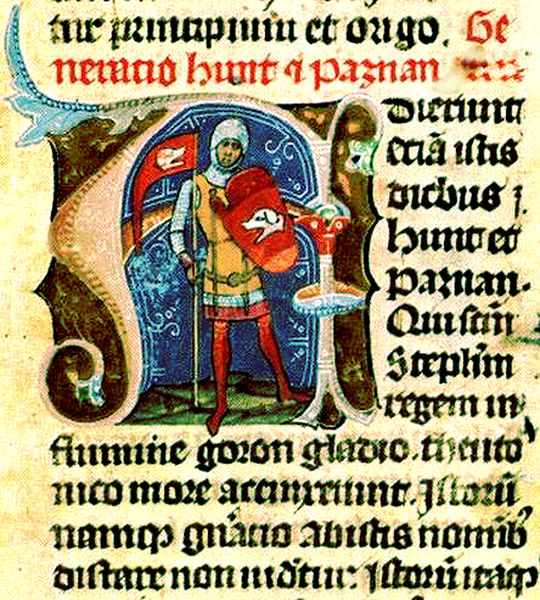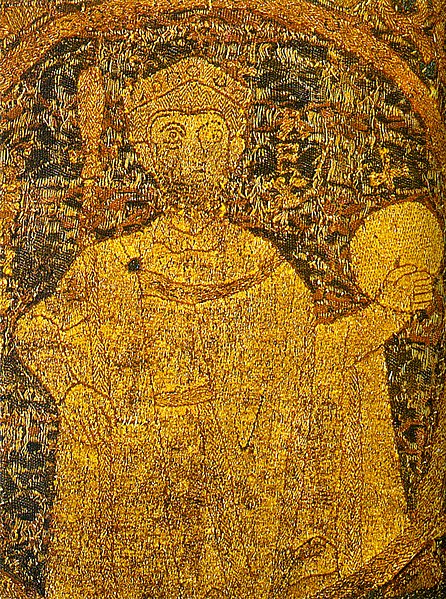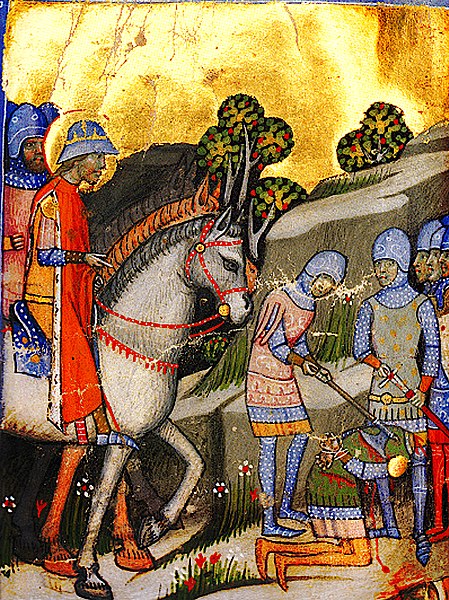Hont-Pázmány (Hunt-Poznan) was the name of a gens ("clan") in the Kingdom of Hungary. The Gesta Hunnorum et Hungarorum mentions that the ancestors of the family, the brothers Hont (Hunt) and Pázmány (Pazman), originally from the Duchy of Swabia in the Holy Roman Empire, arrived in the late 10th century to the court of Grand Prince Géza of the Magyars:The next arrivals were Hunt and Pazman, two half-brothers, courageous knights of Swabian origin. These two and their retainers had been journeying through Hungary with the intention of passing over the sea when they were detained by Duke Géza, and finally they girded King Stephen with the sword of knighthood at the river Hron, after the German custom.
Hont depicted in the Chronicon Pictum
Stephen I, also known as King Saint Stephen, was the last Grand Prince of the Hungarians between 997 and 1000 or 1001, and the first King of Hungary from 1000 or 1001, until his death in 1038. The year of his birth is uncertain, but many details of his life suggest that he was born in, or after, 975, in Esztergom. He was given the pagan name Vajk at birth, but the date of his baptism is unknown. He was the only son of Grand Prince Géza and his wife, Sarolt, who was descended from a prominent family of gyulas. Although both of his parents were baptized, Stephen was the first member of his family to become a devout Christian. He married Gisela of Bavaria, a scion of the imperial Ottonian dynasty.
Portrayal of Stephen I on the Hungarian coronation pall (chasuble) from 1031
Stephen I of Hungary
Stephen's birth depicted in the Illuminated Chronicle
Koppány's execution after his defeat by Stephen, depicted in the Chronicon Pictum




